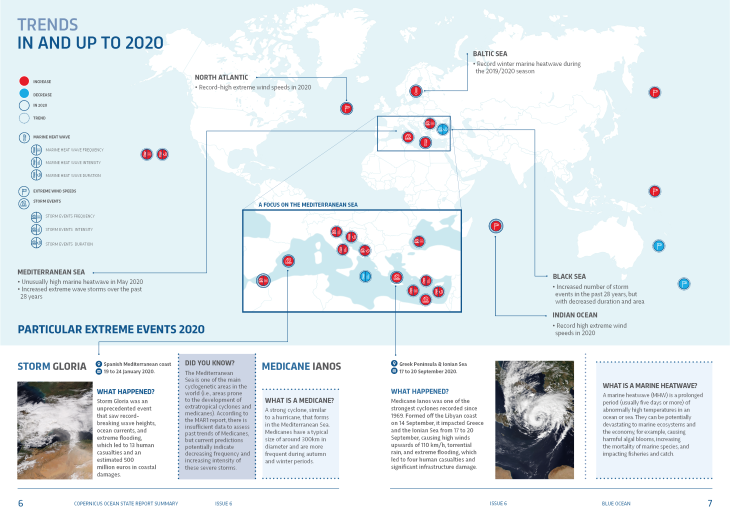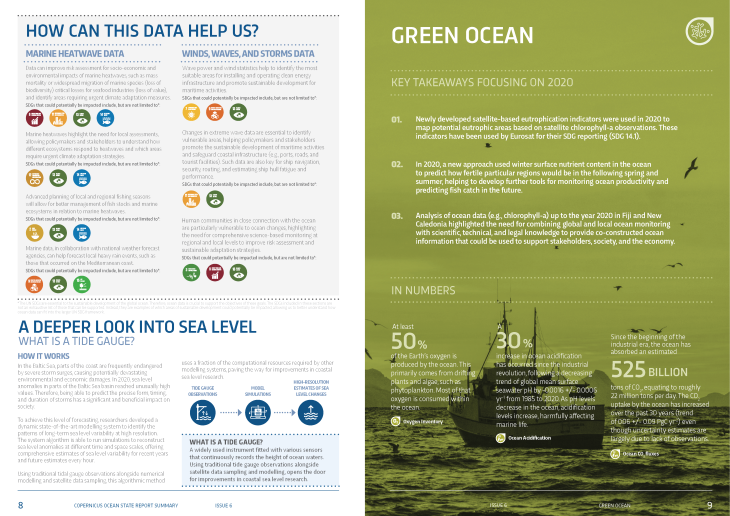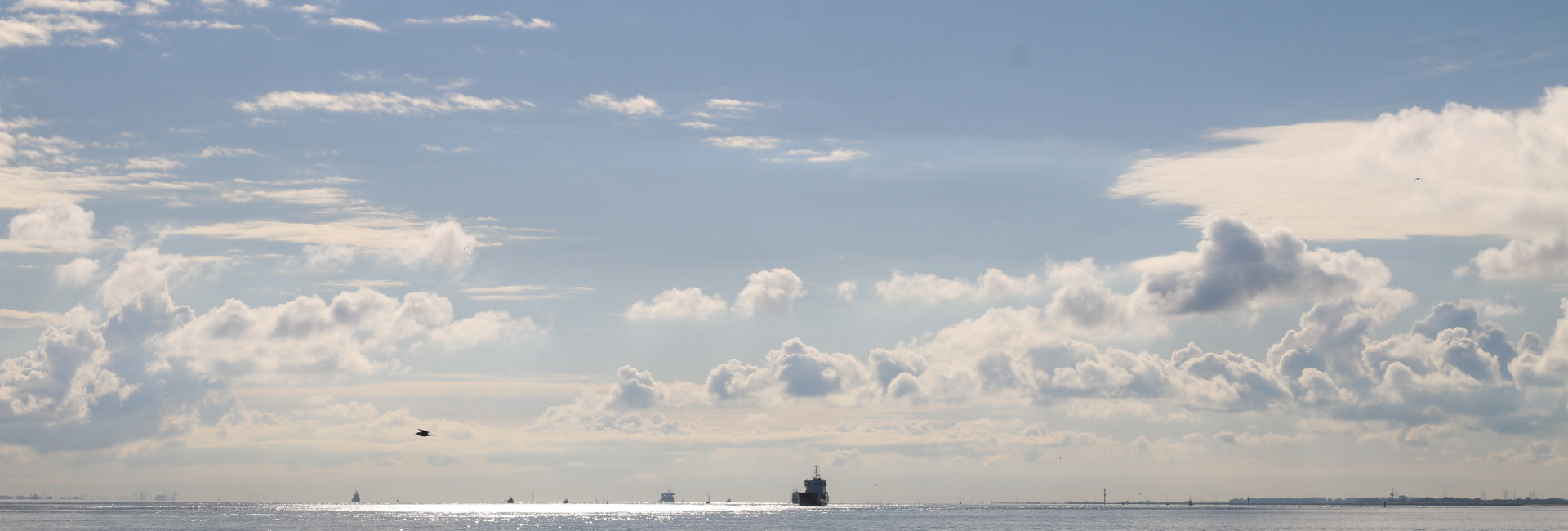The state of the Ocean
How has the ocean changed in recent years and decades? What challenges does it face and what possibilities are there for adaptation? These are the questions addressed in the annual Copernicus Ocean State Report, published by the Copernicus Marine Service. It provides a comprehensive overview of the state of Europe's regional seas as well as the global ocean and is compiled by researchers from around the world. This year, the more than 150 experts from more than 30 international institutes again included researchers from the Helmholtz-Zentrum Hereon.

6th Ocean State Report Summary page 6-7
Dr Joanna Staneva, head of the Hydrodynamics and Data Assimilation Department at the Hereon Institute for Coastal Systems - Analysis and Modelling, as well as scientists Dr Marcel Ricker and Dr Arno Behrens from the same department, are leading the chapter on changes in the wave climate in the Black Sea. Here they are primarily looking at the changes in waves, wave energy and wind under extreme conditions. Their result: the intensity and frequency of extreme events in the Black Sea has slightly increased, but they last shorter and extend over a smaller area. Wave energy can be used to generate renewable energy. Where it is highest is thus a decisive factor for the siting of wave power plants, but must also be taken into account when building offshore wind farms and other coastal and offshore projects.

6th Ocean State Report Summary page 8-9
Another chapter of the report deals with the reconstruction of sea level data. Here, Dr Sebastian Grayek, with the support of Dr Nam Thanh Pham, Prof Emil Stanev and Dr Joanna Steneva, also scientists from the Department of Hydrodynamics and Data Assimilation, is investigating the changes in the Baltic Sea along the coast using tide gauges and models. His work is based on a novel Kalman filter approach that reconstructs high-resolution sea level data sets using hourly tide measurements and model analysis. This represents a valuable extension of existing observational and modelling capabilities for sea level research. The reconstructions allow an independent estimate of the response of sea level to climatic changes in recent decades and thus provide information on the reliability of results from model simulations. In addition, this method consumes less computing power than conventional model simulations with comparable results.
The Copernicus Ocean State Report serves not only as a reference for a global audience, but also directly for the activities of the European Union. It is an openly accessible and scientifically sound compilation on the status of our seas and the ocean. Only with information sources like these is it possible to understand their past and future changes and thus adopt reasonable measures for better and more sustainable use.
Further information
Contact
Institute for Coastal Systems - Analysis and Modeling
Helmholtz-Zentrum Hereon
Institute for Coastal Systems - Analysis and Modeling
Helmholtz-Zentrum Hereon
Communication and Media
Helmholtz-Zentrum Hereon
